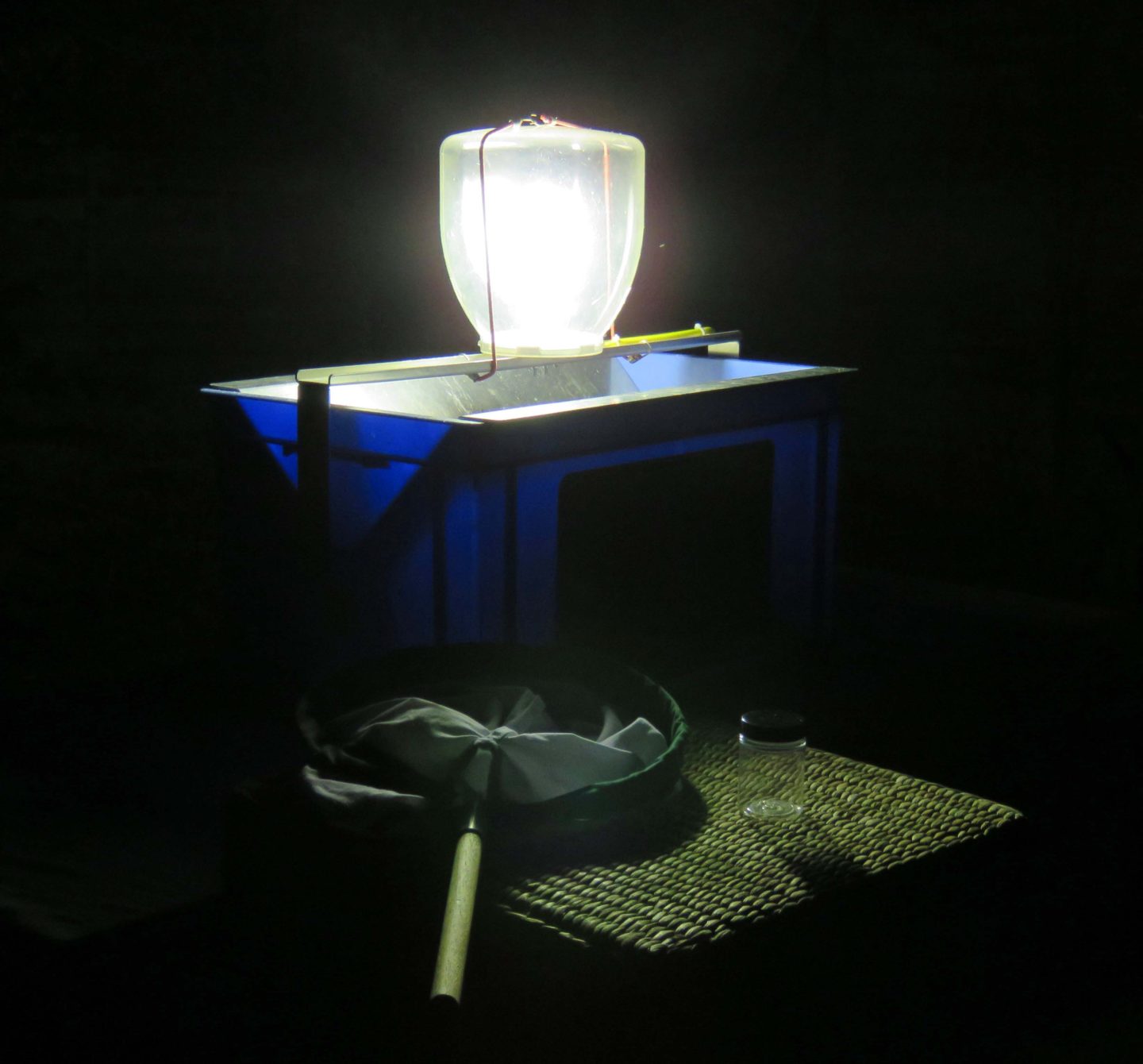 Welcome to ‘What’s in the box?’, a regular feature that looks at what has been recorded over the previous recording period. From April to September inclusive, the reports will be monthly then the reports will be every 3 months through autumn and winter.
Welcome to ‘What’s in the box?’, a regular feature that looks at what has been recorded over the previous recording period. From April to September inclusive, the reports will be monthly then the reports will be every 3 months through autumn and winter.
My moth trap is homemade (albeit not by me!) and contains egg boxes for moths to huddle into and a bright light to attract the moths. I set it up as and when the weather permits and the usual plan is to position it in the garden at Bubble HQ using the mains electric. I then run around like a mad woman with a net and pots catching everything flying to the light (except bats which can be a bit of a problem sometimes!). The neighbours do think I’m a little odd! When bedtime calls, the trap is then left running all night and everything that has fallen into the box is recovered early morning. And when the box is opened….I never know what I’m going to get.
I do take the trap further afield using a generator. I have permission to use the trap in certain local areas and always release the moths back to where they were found.
All records will be from Bubble HQ here in Dalby Forest unless otherwise stated.
For one reason or another, this August report is somewhat late. Even August itself went by in a bit of a blur. All the mothing this month was carried out in the back garden at Bubble HQ. No field trips which is a bit of a shame but hey, at least I managed to get some mothing in. The box was left out overnight only a handful of times due to wind and rain forecasts. As such, the length of the mothing sessions in August were generally only a couple of hours which was disappointing
A thorny subject……
August began in exactly the same way as July with rain and wind bringing all the wrong things to the party. Nevertheless, August 1st brought in 31 moths of 15 species.
Considering that the Small Fan-footed Wave was the most common moth last month, it has all but gone with only one to the box throughout the month. The first moth down to the box was a Mother of Pearl, closely followed by five more. The Mother of Pearl foodplant is the common nettle and we have plenty of those in the garden so it’s no surprise that a few came to the light.
A second generation Purple Thorn then appeared, landing on the sheet that hangs from the washing line. Smaller than the first generation that flies April-May (see What’s in the Moth Box? April), the second generation Purple Thorn moths fly July-August and are smaller and pinker. The photo, below right, shows the second generation’s pinkness compared to the beige and rusty-bronze colours of the first generation (below left).
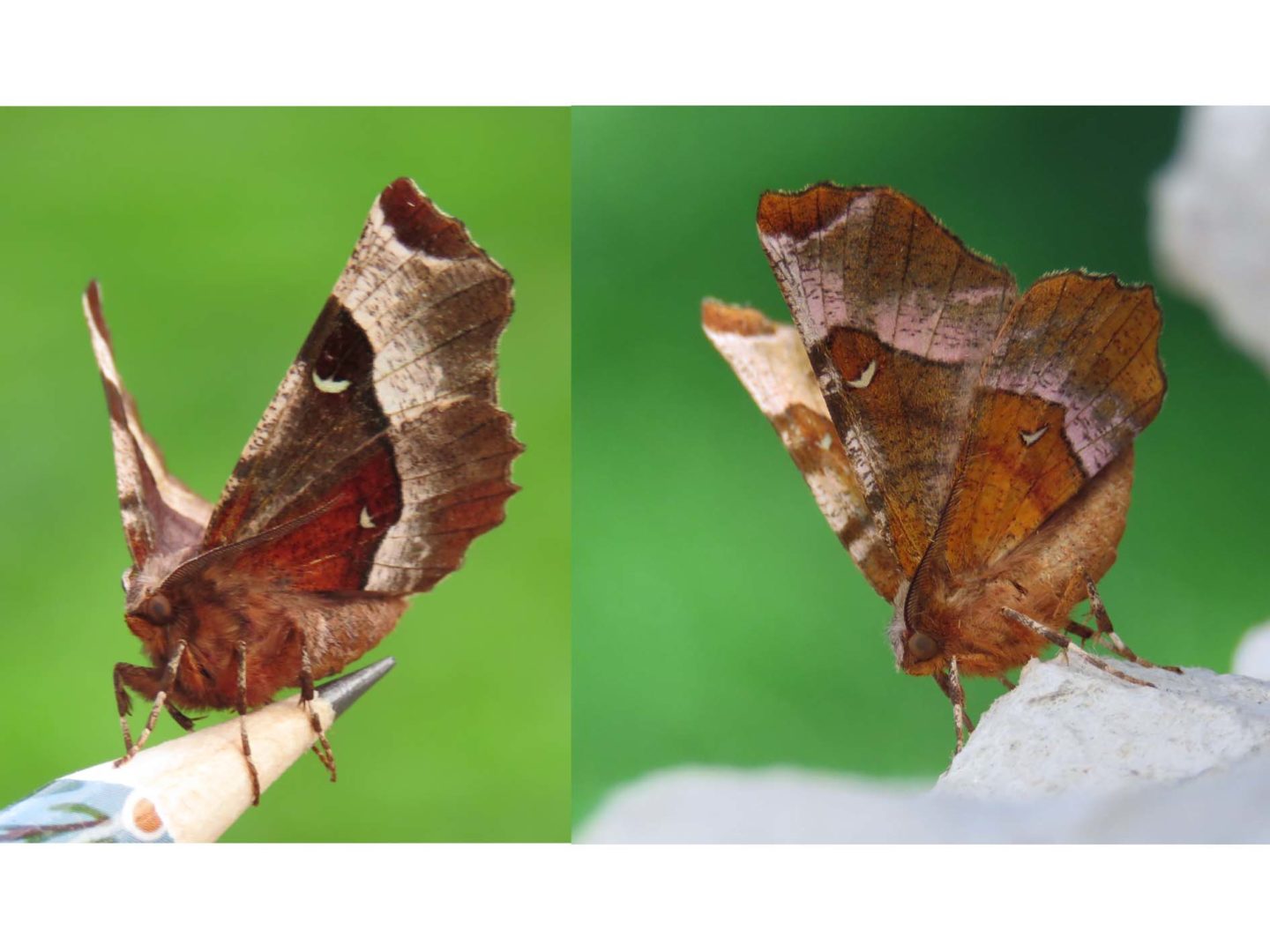
Purple Thorn (Selenia teralunaria)
Another Thorn that came to the light and continued to appear throughout the month was the Canary-shouldered Thorn. With a bright yellow body and wings that, surprisingly, exactly match decaying beech leaves, this moth is another example of how exotic-looking UK moths can be. I always think they look like flying ping-pong balls covered in yellow fur!
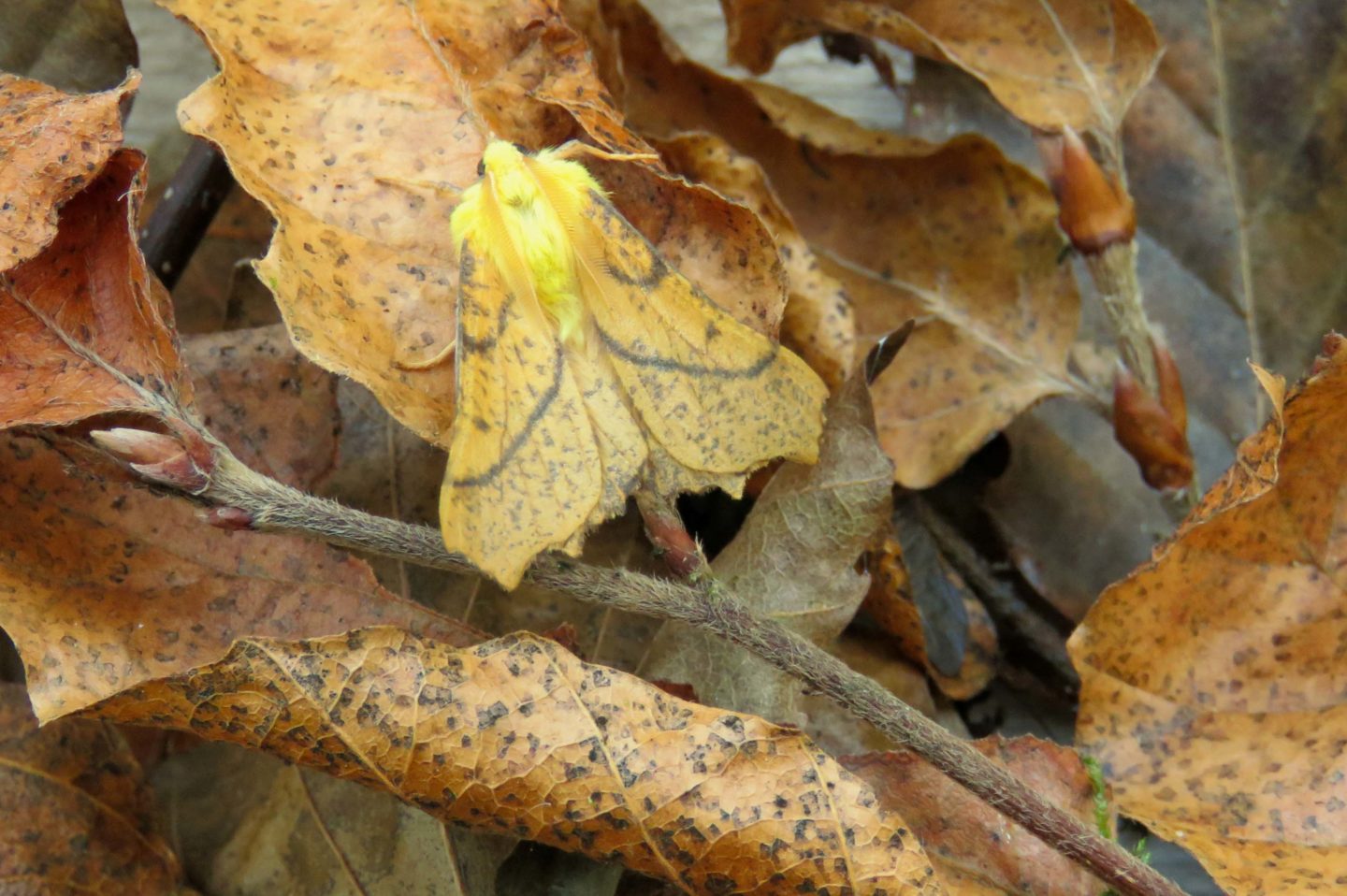

Canary-shouldered Thorn (Ennomos alniaria)
What’s in a name?
The Canary- shouldered Thorn along with the Rosy Rustic and Centre-barred Sallow all came to the light. I am always puzzled by moth names and find that the common names more than often not do not replicate the scientific names. These three highlight exactly what I mean. All three common names describe the moth using its colour (the Rosy Rustic looks brown but it does have a rosy tinge to it) as a starting point. The scientific names, to me, don’t describe the most obvious thing about the moth. If I was giving the Canary-shouldered Thorn a scientific name for the first time, I do think that ‘yellow’ would appear in it somewhere!
Canary-shouldered Thorn: Ennomos ( means lawful, within the law) + alniaria (means alder, the foodplant)
Rosy Rustic: Hydraecia (means to dwell near water) + micacea (means to quiver or glitter)
Centre-barred Sallow: Atethmia (means unspotted) + centrago (means centre)

Clockwise from left: Centre-barred Sallow, Canary-shouldered Thorn, Rosy Rustic
One scientific name that does mention the colour of the moth is Phragmatobia fuliginosa or Ruby Tiger. Fuliginosa means sooty referring to the ground colour. In my opinion, the name is a poor descriptor as the moth really is bright ruby red! If someone asked me to describe a Ruby Tiger, the word ‘sooty’ would not even enter my head. Considering how common they are, there was just one Ruby Tiger in the box this month but such a joy to see.

Ruby Tiger (Phragmatobia fuliginosa)
…and introducing Feathered Gothic!
The grandly named Feathered Gothic sounds like a band’s name. I can see them headlining at Glastonbury or appearing as special guests at Whitby’s Goth Week. I don’t think that there’s a band out there called ‘Feathered Gothic’ but there should be!! Back to the moth though……
Males have feathered antennae which gives rise to the common name and, as can be seen below, the only Feathered Gothic to the light appears to be male. The gothic arches on the forewing can be clearly seen here.
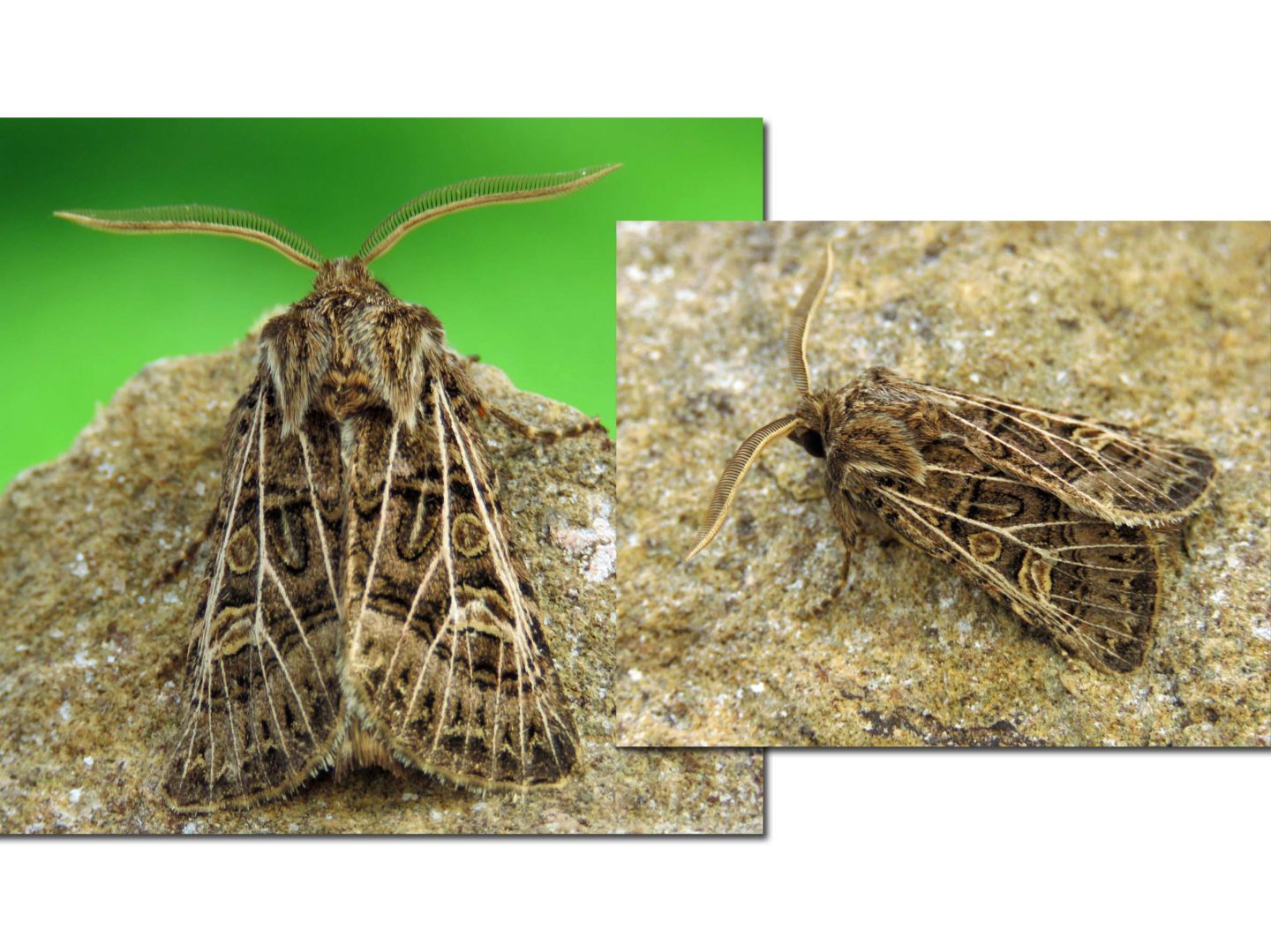 Feathered Gothic (Tholera decimalis)
Feathered Gothic (Tholera decimalis)
She sells sea shells….
One Yellow Shell moth didn’t exactly drop into the box. It was seen sitting on the wall of the house enjoying the evening sun. A beautifully marked moth, it’s supposed to be a more vibrant yellow in the south of the UK but, not having seen any southern Yellow Shells in the flesh, I have no idea where on the ‘yellow’ spectrum my moth lies. Mine seems to be a bit on the grubby to dull side!
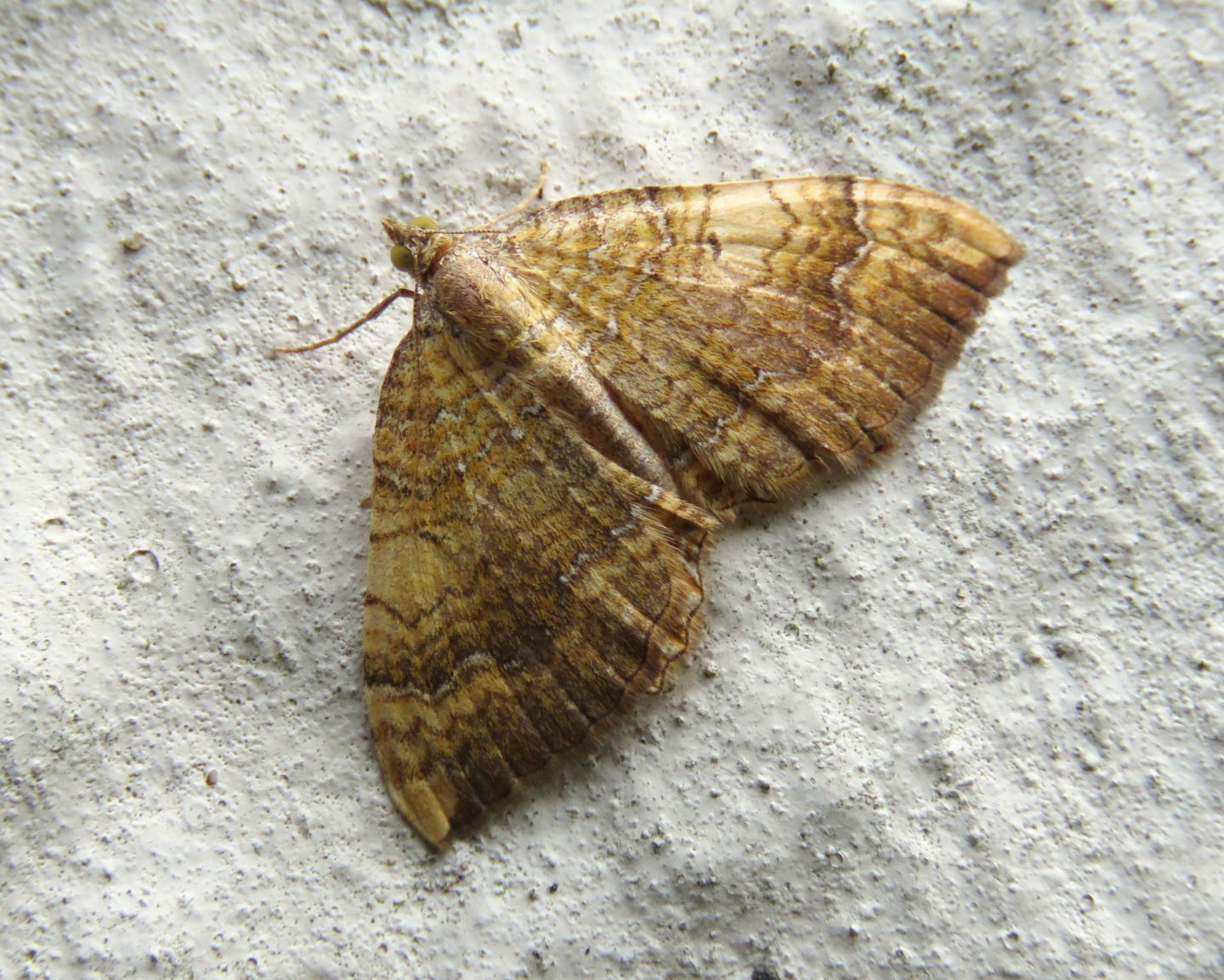
Yellow Shell (Camptogramma bilineata bilineata)
Hits the spot
The Gold Spot moth. I love it. The brightness of the gold ‘spots’ and the overall shimmeriness of the whole moth are, to me, just stunning. There are several moths that I would like to replicate as a piece of jewellery but the Gold Spot is the one that I think would work really well as a pendant. Using a variety of different coloured golds and silver, it would need a particularly skilled goldsmith to create it. I guess it would be expensive but it would be oh so worth it if it looked exactly like the moth itself. I live in hope!
One of the Gold Spot’s foodplants is the Yellow Iris which has established itself around the pond so it was great to see it in the garden. It’s a pity there was only four Gold Spots in the box as it is common and I would have expected more.

Gold Spot (Plusia festucae)
Feeling blue…
As the month went on, the usual suspects arrived….the carpets. I find the carpet moths very difficult to differentiate between. Some species are just so similar and when checking wing patterns in identification books, my eyes can go a bit wobbly after a while!
The Dark-marbled Carpet led the way with 21 throughout the month. The Flame Carpet, hard to distinguish from the Red Carpet, wasn’t far behind with 19. This one sat in the pot with its wings open which was useful in differentiating between the two. It’s definitely a Flame Carpet. I can’t find much about the foodplant as it appears that no one really knows what it is in the wild. If anybody knows then please let me know!

Surprisingly, the Common Carpet wasn’t the most common but 10 came to the light during the month. It generally will have two generations where we are in the north, the first May-June and the second July – September. Further north there is generally only one, further south there can be three. Whilst the foodplants are bedstraws and cleavers, the Common Carpet likes to fly at dusk favouring flowers such as ragwort which grows in abundance around Bubble HQ. I often disturb Common Carpetsit when searching for moths and butterflies in the nearby meadows.
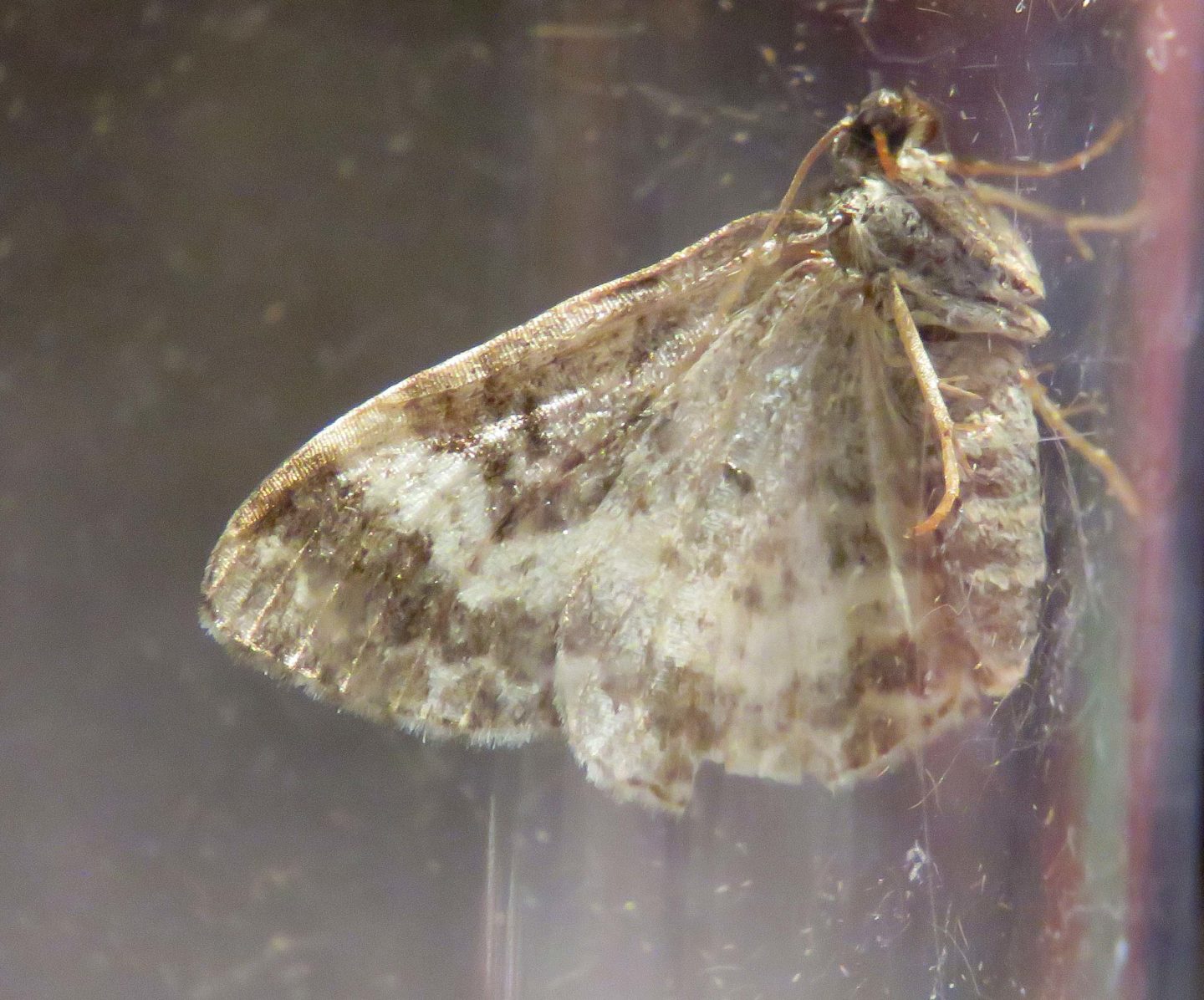
Common Carpet (Epirrhoe alternate alternate)
August also saw four July Highflyers and a Red Twin-spot Carpet. A nice addition to the box was a Blue-bordered Carpet. Looking at it, the moth isn’t exactly blue. It has a blue-grey outer border on the forewing giving rise to the common name. This is an example when I don’t particularly agree with either the common or the scientific name but I do come down in favour of the latter for once. Plemyria means the flood tide and rubiginata means to rust which come from the reddish blotches on the on the forewing. It certainly does look like it’s rusting whereas a blue border may pushing my imagination a bit far!!

Blue-bordered Carpet (Plemyria rubiginata)
Who’s calling me names?
A large, dark moth came to the light towards the end of August. It hung around the light, never dropping in. I tried to catch it with the net but lost it. When it appeared again, I took a rushed photo then lost it again. In the morning, it was in the box. It was an Old Lady named after a supposed pattern resemblance to an old lady’s face. Try as I might, I cannot see a lady’s face, old or otherwise! The scientific name I think is rather rude. Fancy calling it Mormo maura. Mormo means a hideous she-monster! It may not be a looker, mine was certainly not a good example but more by age, wear and tear rather than through ugliness. It’s not an overly common moth in the area so I was particularly pleased to see it.

Old Lady (Mormo maura)
A slice of bird cherry pie anyone?
A common, particularly in the north, micro moth to the light was the delightfully named Bird-cherry Ermine which sound more like a pudding to me! It has many more spots than all the other micro Ermines so easily identifiable and is usually seen well away from the foodplant which is, predictably, the Bird Cherry. The nearest Bird Cherry tree (that I know of) to Bubble HQ is about 75 metres away.
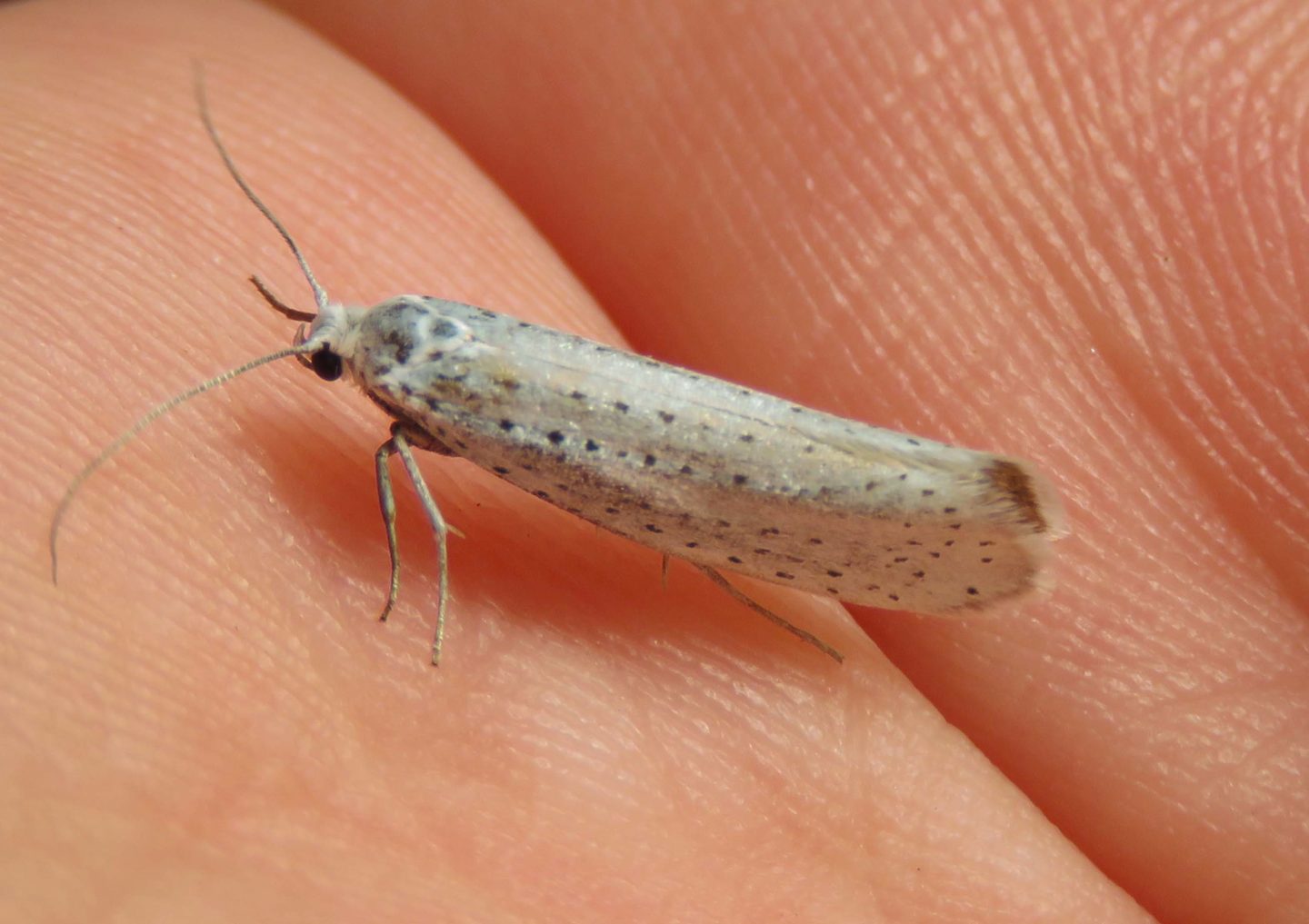
Bird-cherry Ermine (Yponomeuta evonymella)
What’s in the box? August stats (totally unscientific!)
Number of sessions – 7
Average length of session – 2 hrs
Temperatures – ranging from 14 to 23 degrees
Most exotic looking – Canary-shouldered Thorn
Total number of moths – 243
Most common – Lesser Yellow Underwing
Best mistake – Barred Hook-tip (submitted to the recorder who corrected the submission which was originally Oak Hook-tip)
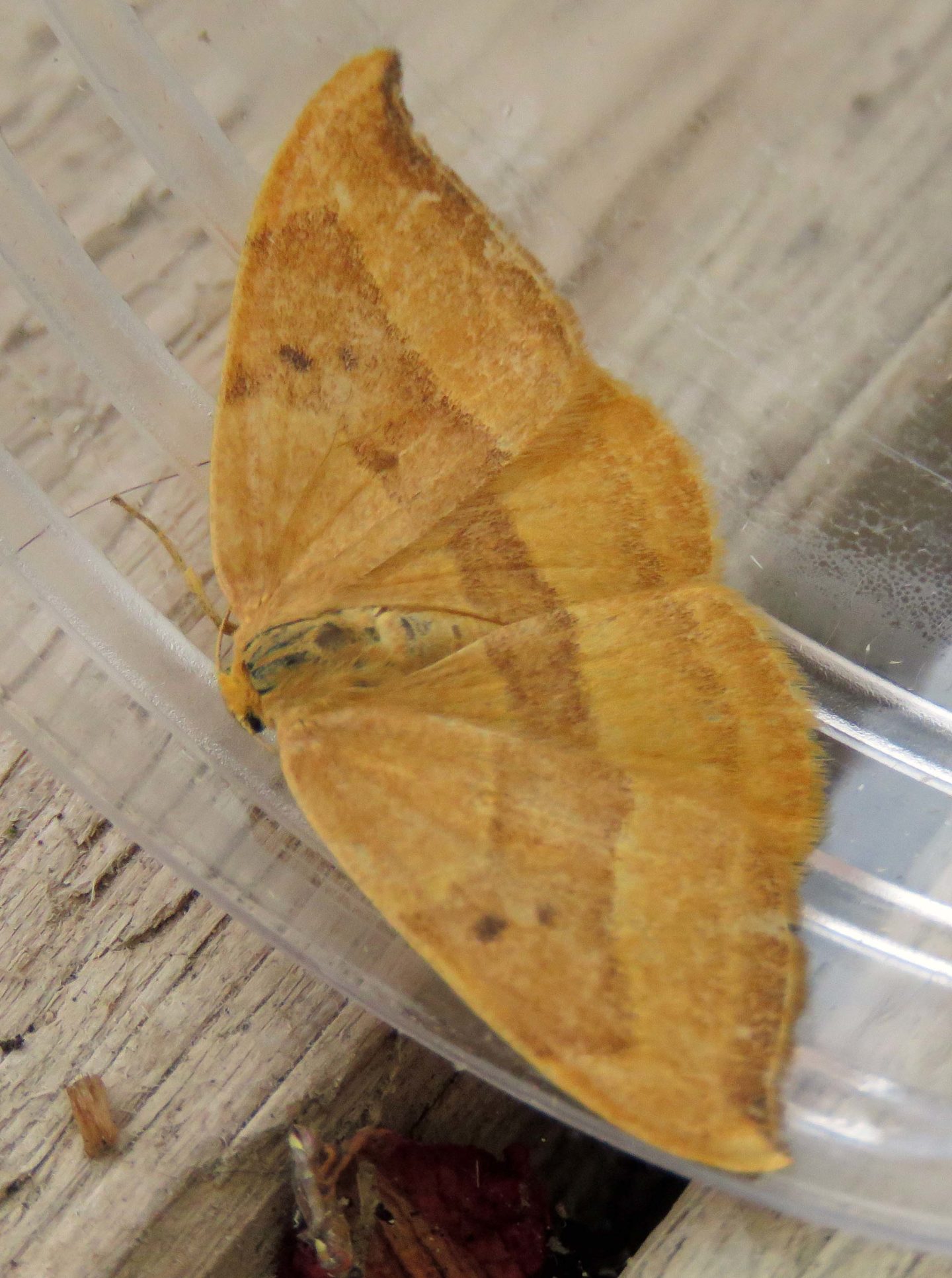
Barred Hook-tip (Watsonalla cultraria)
Best warm-up act – Small Dotted Buff
Most likely to become a model (in the jewellery industry!!) – Gold Spot

